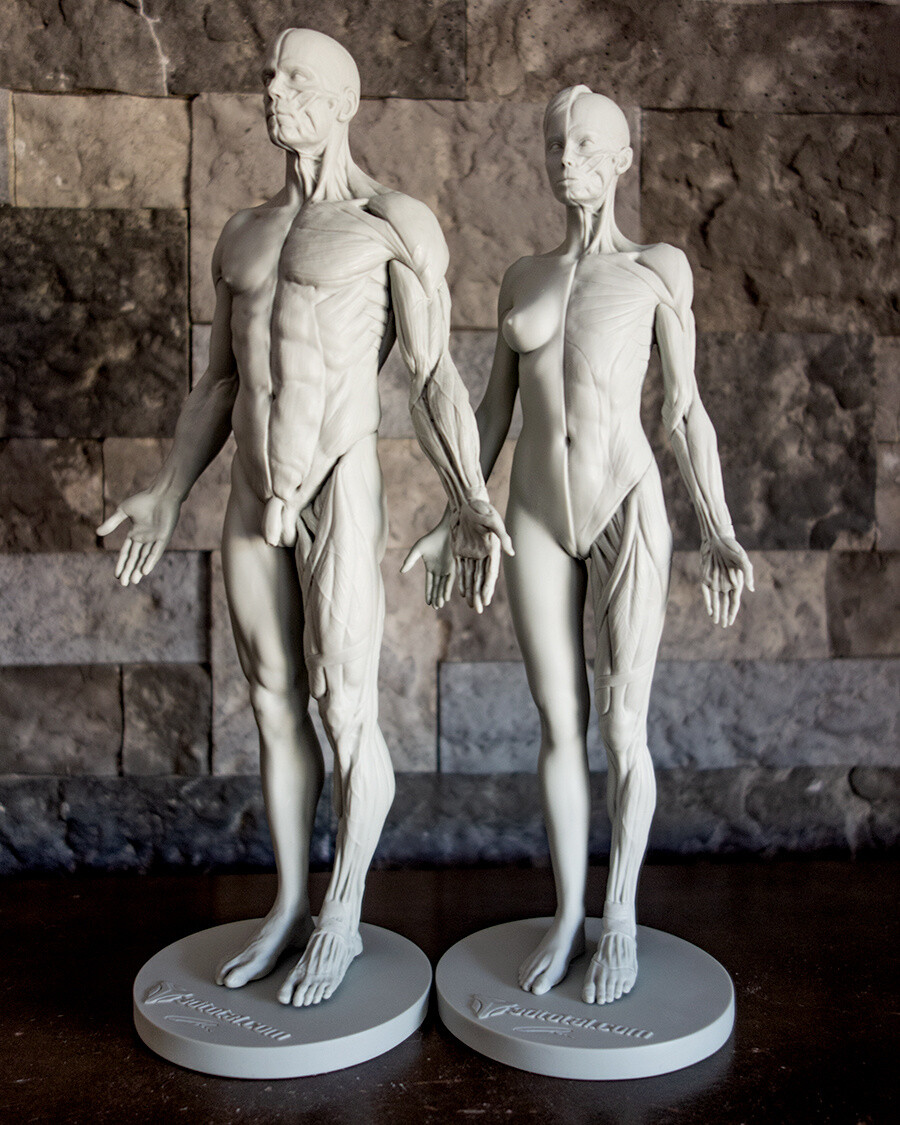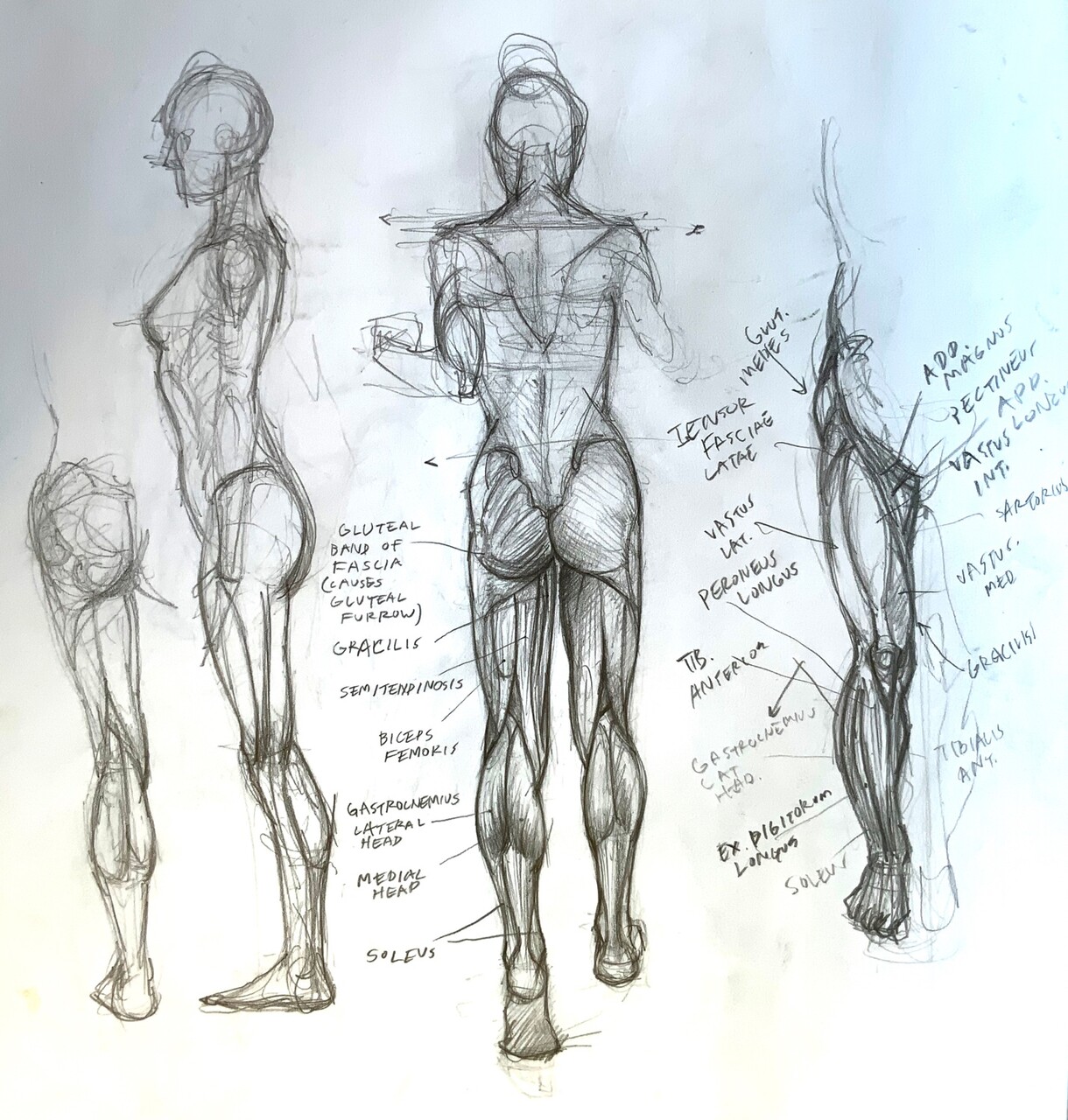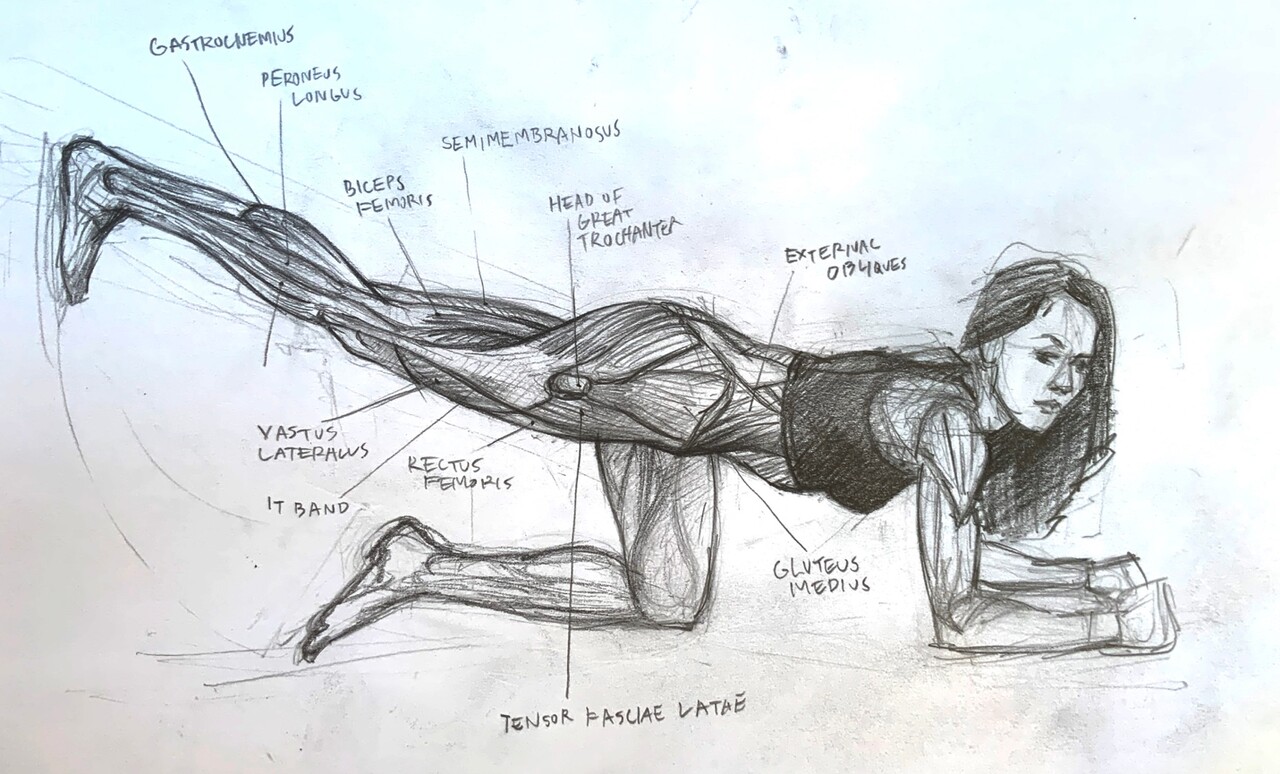I recently invested in two écorché models from the company 3Dtotal based in the UK. There’s always this long period of analysis that I go through before I invest in a new tool and I thought about these models for a while before plunking down my dollars. And I have to say they were well worth the cost!
My only regret is that I didn’t buy these models sooner. They are half and half models, meaning that half the model is a realistic skin base, while the other is an écorché, revealing the muscle beneath. Having both sides is incredibly useful. A constant challenge of anatomy is that so much of the structure is hidden when observing a live human form due to the layering of skin and fat. Unless looking at a very athletic or thin person, it can be difficult to discern those muscles that were are so much clearer in an anatomical diagram.
I originally thought I would mostly be drawing the models themselves. But I’ve found them to be even more useful as an additional reference while I am making other studies. For example, the above study was based off a book on weightlifting muscles that I have. I wanted more information on the upper body and on the feet, but the book has the models wearing shoes and tops. So, with the help of my écorché model, I filled in the gaps and learned even more!
The above study is based off a photograph from Sarah Simblet’s Anatomy for the Artist. This book has fantastic photographs, but the trouble is that the underlying structures can be difficult to see.
Female examples tend to have even more subtle musculature, making them a challenge. But, with the help of my écorché model I was able to discern where the muscle groups are and understand the forms on a deeper level. My motto with studies from books and other sources is always to “observe and add.” I try not to simply copy what I see before me, but also add more knowledge with additional information and underlying structure. Anatomical study is all about piercing that veil of the exterior form and what one of my professor’s called, “the seduction of the outline.” There is so much happening beneath the skin and so much to be gained if we can start to grasp the mechanics of the body!
Sometimes I am just drawing the model and this is of course a useful exercise in itself. A good challenge is drawing the skin side of the écorché but with the muscles revealed. It forces a deeper understanding, and you can constantly check your work by looking at the reverse side. I’ve also recently discovered color coding for memorizing muscle groups. Seems like a no-brainer, but it really helps to encode them in long term memory!
This purchase was totally worth my money. If you do buy them, I recommend also picking up some super glue. They are 3D printed, which I think help keeps the cost down – but some of the joined areas could use a tad bid more glue. My female model’s left arm fell off one day, a rather alarming event. I simply glued it back into place though and now it’s all good!







